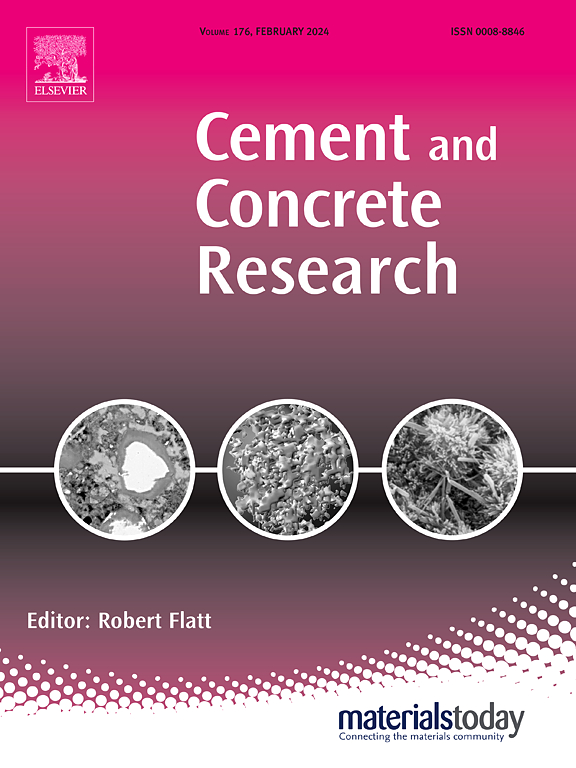Effect of alumina on the carbonation reactivity of calcium aluminosilicate glasses
IF 13.1
1区 工程技术
Q1 CONSTRUCTION & BUILDING TECHNOLOGY
引用次数: 0
Abstract
Reactivity of silicate glasses, the main component of industrial byproducts such as blast furnace slag and yellow phosphorus slag, is highly linked with their chemical and nano-structural properties. To provide insights on the viability of such materials for use in CO2 mineralization, this study highlights the role of Al2O3 in the carbonation of synthetic CaO·Al2O3·SiO2 glasses. The incorporation of Al2O3 impedes the carbonation reaction by modifying the glass structure at multiple length scales. At the atomic scale, the formation of [AlO4]− removes the non-bridging oxygens which serve as sites for Ca2+/H+ exchange, and disrupts the Ca2+ channels by clustering with [SiO4] in the Q4 state. At the nanoscale, phase-separated regions were observed particularly in high-Al glasses. During carbonation (when pH = 6), the Al species re-adsorbed on the surface of glass particles preferentially to Ca2+. This effect hinders the heterogeneous nucleation and thus the morphology of CaCO3 precipitated on glass particles.
氧化铝对钙铝硅酸盐玻璃碳酸化反应性的影响
硅酸盐玻璃是工业副产物如高炉炉渣和黄磷渣的主要成分,其反应性与其化学和纳米结构性质密切相关。为了深入了解这些材料用于二氧化碳矿化的可行性,本研究强调了Al2O3在合成CaO·Al2O3·SiO2玻璃碳酸化中的作用。Al2O3的掺入通过在多个长度尺度上改变玻璃结构来阻碍碳化反应。在原子尺度上,[AlO4]−的形成去除了作为Ca2+/H+交换位点的非桥接氧,并通过与处于Q4态的[SiO4]聚集而破坏了Ca2+通道。在纳米尺度上,在高铝玻璃中观察到相分离区。在碳化过程中(pH = 6时),Al在玻璃颗粒表面的重吸附优先于Ca2+。这种影响阻碍了非均相成核,从而阻碍了CaCO3在玻璃颗粒上的析出。
本文章由计算机程序翻译,如有差异,请以英文原文为准。
求助全文
约1分钟内获得全文
求助全文
来源期刊

Cement and Concrete Research
工程技术-材料科学:综合
CiteScore
20.90
自引率
12.30%
发文量
318
审稿时长
53 days
期刊介绍:
Cement and Concrete Research is dedicated to publishing top-notch research on the materials science and engineering of cement, cement composites, mortars, concrete, and related materials incorporating cement or other mineral binders. The journal prioritizes reporting significant findings in research on the properties and performance of cementitious materials. It also covers novel experimental techniques, the latest analytical and modeling methods, examination and diagnosis of actual cement and concrete structures, and the exploration of potential improvements in materials.
 求助内容:
求助内容: 应助结果提醒方式:
应助结果提醒方式:


